Syn.: Cylindropuntia subulata (Muehlenpf.) F. M. Knuth, Opuntia subulata (Muehlenpf.) Engelm., Pereskia subulata Muehlenpf., Pereskiopsis subulata (Muehlenpf.) Britton et Rose ex Rose
Family: Cactaceae Juss.
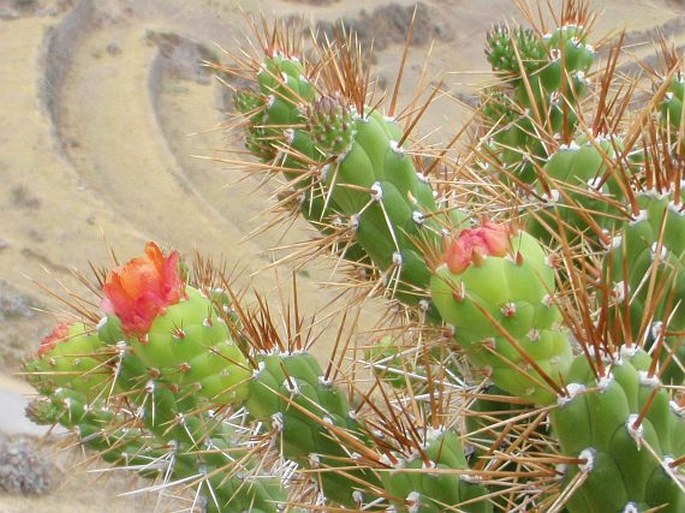
Distribution: Mountain areas of southern Peru and western Bolivia. It is also grown in climatically suitable areas of the world as a decorative plant (e.g. South Australia, Spain).
Ecology: It grows in semi-arid to arid areas, on rocky slopes of mountain valleys, at altitudes from 2000 up to 4000 m.
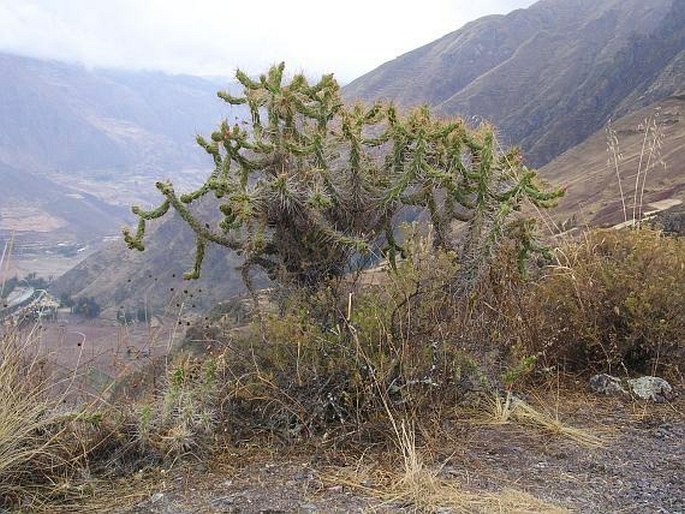
Description: Shrub or small cactus tree, up to 3(–4) m tall. Stem erect, branched, divided into cylindrical segments that are up to 10 cm long and 2–3 cm wide. Spines 1–4 per areole, light yellow, up to 8 cm long, without papery sheaths, glochids short. The flowers appear on the terminal part of the branches, 5–10 cm in diameter, tepals orange-red. The fruits are ovoid, up to 10 cm long, green.
Usage: It is cultivated in Europe as a houseplant, its cultivation is easy.
Threat and protection: Like all species of the family Cactaceae, this species is included under the protection of the Convention on International Trade in Endangered Species (CITES).
Note: This South American genus is related to the North American genus Cylindropuntia.
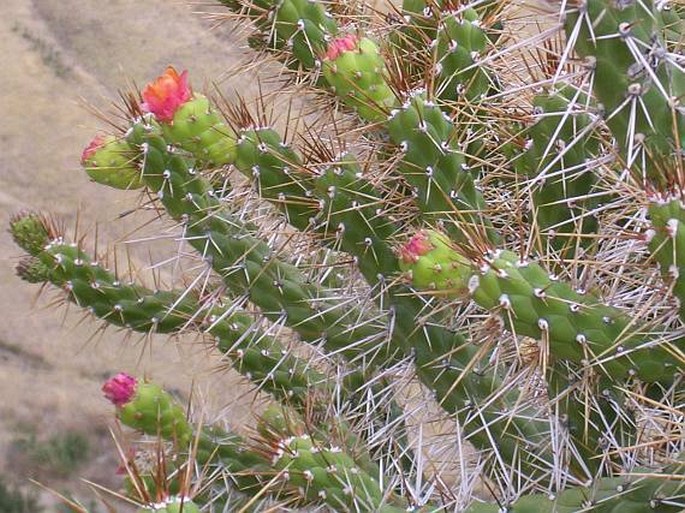
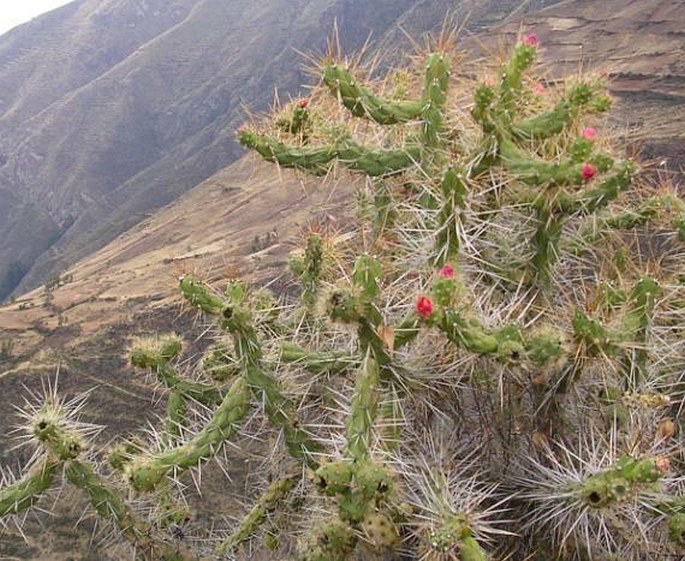
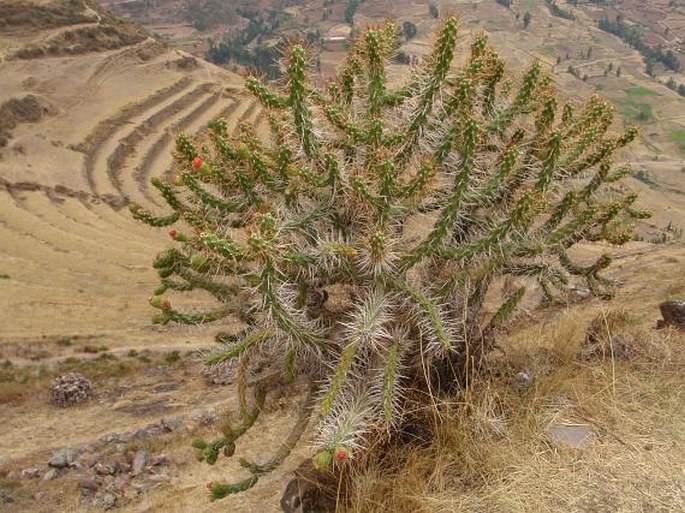
These images were taken in Peru, Pisac (by Jindřiška Vančurová, September 4, 2008).


